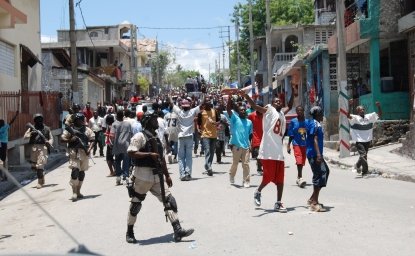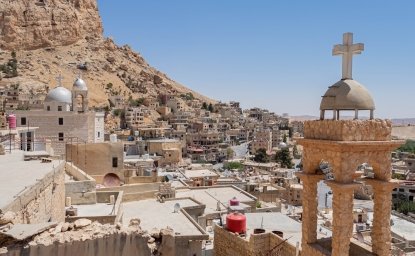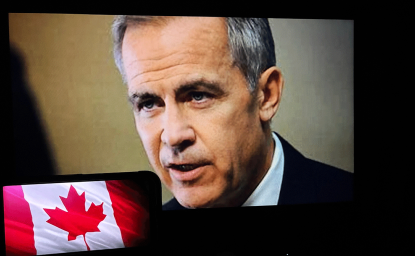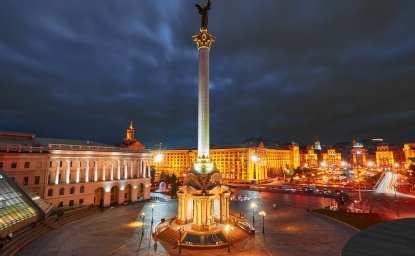By Christopher Alexander
What is the status of Islamists in Tunisia three years after the Arab uprisings began and two years after the Islamist Ennahda Party’s first electoral victory?
Tunisia’s Islamists are the first to step aside voluntarily after being elected. But they are also more divided today than ever before. The challenges of being in government rather than trying to topple it have driven sharp new wedges into old cracks within the Ennahda Party. The growth of a Salafi alternative generates additional tensions within the movement, while the rise of a stronger secular opposition creates new challenges from without.
Tunisia’s Islamist movement has always included a wide range of personalities and views. Since the 1970s, activists have differed on a range of fundamental questions. What is the relationship between Islamic law and democracy? Should Tunisian Islamism operate as a social movement or as a political party? How, if at all, should Islamists relate to secular parties?
For more than two decades, Ennahda has provided the Islamist movement’s dominant voice. For the most part, that voice has spoken in pragmatic, moderate tones. The party’s top leadership long ago rejected violence and committed Ennahda to competitive, pluralistic politics governed by democratic institutions. Some members of the party opposed these positions, but fierce government repression forced more militant activists into silence, jail, or out of the country.
 President Zine al Abidine Ben Ali’s fall in January 2011 allowed a more diverse Islamist landscape to take shape. A Salafist trend become more visible and challenged Ennahda for Islamist support. One year later, Ennahda became the senior partner in a coalition government with two secular parties. The government’s central task has been to craft a new constitution. That task remains unfinished as of this writing. The politics of governing and constitution-making have exacerbated tensions within Ennahda and with other Islamists.
President Zine al Abidine Ben Ali’s fall in January 2011 allowed a more diverse Islamist landscape to take shape. A Salafist trend become more visible and challenged Ennahda for Islamist support. One year later, Ennahda became the senior partner in a coalition government with two secular parties. The government’s central task has been to craft a new constitution. That task remains unfinished as of this writing. The politics of governing and constitution-making have exacerbated tensions within Ennahda and with other Islamists.
Ennahda’s top leaders occupy a difficult place on this spectrum. They must work with other parties to complete a constitution that enjoys broad support and that makes good on Ennahda’s professed commitment to pluralism and democracy. But they also must contend with Salafis and with more conservative members of their own party. Ennahda leaders will need their conservative members’ votes at the next election, and they want to maintain some degree of leverage with the Salafis.
Within Ennahda, negotiations over the new constitution have deepened the longstanding divide between pragmatists and hardliners. Pragmatists, including Rachid al Ghannouchi (above), have been willing to make concessions in order to work with other parties on a new constitution. Most significantly, Ennahda leaders agreed to exclude sharia from the new constitution. They also stepped back from their demand for a purely parliamentary system that would vest considerable power in the institution that Ennahda dominates. As popular discontent with Ennahda grew in the summer of 2013, the pragmatists offered to make more room in the government for opposition figures. But in October, faced with mass protests and strong opposition from a large coalition of secular parties called the National Salvation Front, Ennahda agreed to step down from government.
Hardliners argue that the October, 2011 election endowed Ennahda’s government with democratic legitimacy. Their party won; it should act like it. Other parties should accept the expressed will of the people. Throughout the negotiations for a new constitution, hardliners have opposed the pragmatists’ willingness to compromise on religious values and to draw secular technocrats into vital state institutions. They also opposed giving up power that the party won at the ballot box.
 Conflicts over authority within Ennahda also tear at the party’s fabric. Some of these tensions are generational, with younger activists challenging Ghannouchi’s long rule. These conflicts sometimes overlap with philosophical tensions or with tensions between activists who stayed in Tunisia and endured Ben Ali’s repression and those who went into exile. Other tensions concern the locus of ultimate authority within the party. Hardliners on the party’s shura council contend that the council holds ultimate authority. They have used their positions to challenge Ghannouchi’s control over the party.
Conflicts over authority within Ennahda also tear at the party’s fabric. Some of these tensions are generational, with younger activists challenging Ghannouchi’s long rule. These conflicts sometimes overlap with philosophical tensions or with tensions between activists who stayed in Tunisia and endured Ben Ali’s repression and those who went into exile. Other tensions concern the locus of ultimate authority within the party. Hardliners on the party’s shura council contend that the council holds ultimate authority. They have used their positions to challenge Ghannouchi’s control over the party.
Beyond Ennahda’s ranks, the Salafis also constitute a diverse movement. As discussed below, some of them reject politics altogether, preferring to focus on living pious lives. Others have chosen to work through democratic institutions to try to produce a government that is more strongly influenced by Islamic values. The most visible Salafis, but not necessarily the strongest, are those who have chosen jihad as their path to an Islamic state.
What led to the Ennahda Party’s decision in October to resign in favor of a caretaker government—a striking contrast to events in Egypt? And why did it opt for this course of action?
Frustration with the Ennahda-led government grew steadily during its first two years in power. Political elites seemed more interested in arguing over fine points in the constitution than in addressing the country’s serious social and economic challenges. The general atmosphere in the country became more polarized. Salafists became more aggressive, marching in the streets and attacking bars, art galleries, and opposition political figures.
Secular leaders held Ennahda responsible for the country’s general deterioration. As discussed below, Ennahda behaved in ways that made it easy for the opposition to paint it as incompetent, untrustworthy, and dangerously soft on Salafis. In April 2012, a diverse collection of personalities, many with technocratic experience in former governments, established a new opposition party, Nidaa Tounes (The Call of Tunisia). Nidaa Tounes marked the beginning of a new effort to build a stronger secular opposition to Ennahda.
That effort gained momentum in the first half of 2013 for two reasons. Hoping to work around the gridlocked constitutional reform process, Tunisia’s powerful labor federation sponsored a national dialogue that brought together the top leadership of the country’s major parties. Secular leaders accused Ennahda of dragging its feet on preparations for new elections and of making commitments in national dialogue meetings that it subsequently failed to support in practice. By late spring, Ennahda’s ruling coalition had frayed and it had lost credibility as a bargaining partner with other parties.
 At the same time, the security environment in Tunisia deteriorated dramatically. Between February and October, the assassinations of two prominent secular politicians, attacks on Tunisian military forces, attempted suicide bombings, and evidence of additional plots all confirmed what Ennahda’s critics had argued for months – that the party had coddled the Salafis and brought the country to the brink of chaos. After the assassination of Mohamed Brahmi in late July, Nidaa Tounes and several other opposition parties formed the National Salvation Front, a movement that launched a dedicated campaign to force the Ennahda-led government to resign and to disband the elected constituent assembly that had failed to complete a new constitution.
At the same time, the security environment in Tunisia deteriorated dramatically. Between February and October, the assassinations of two prominent secular politicians, attacks on Tunisian military forces, attempted suicide bombings, and evidence of additional plots all confirmed what Ennahda’s critics had argued for months – that the party had coddled the Salafis and brought the country to the brink of chaos. After the assassination of Mohamed Brahmi in late July, Nidaa Tounes and several other opposition parties formed the National Salvation Front, a movement that launched a dedicated campaign to force the Ennahda-led government to resign and to disband the elected constituent assembly that had failed to complete a new constitution.
The National Salvation Front pulled together a broad range of constituencies: officials from the former regime, trade-unionists, feminists, human rights activists, lawyers, varying shades of leftists, technocrats, business owners. It was a coalition based not on a specific ideology, but on a realization that only a broad secular front, with ties to civil society, could effectively counter Ennahda’s power. Bolstered by the mobilizational strength of the labor movement, and emboldened by the fall of the Morsi government in Egypt, tens of thousands of anti-government protesters clogged downtown Tunis and took up the slogan of the Arab Spring – “the people want the fall of the regime.”
Ennahda initially resisted calls for its resignation, and particularly the call to disband the constituent assembly where it held a majority. Instead, the party offered to lead a broadened national unity government. Opposition parties rejected Ennahda’s offer, refused to negotiate until the prime minister agreed to resign, and kept up the pressure in the streets.
A quartet of Tunisia’s most influential civil society organizations (the largest labor confederation, the chamber of commerce, the human rights league, and the bar association) developed a roadmap to help the two sides navigate through the crisis.
The plan called for the parties to agree on the composition of a new government within three weeks, to form a new electoral commission one week later, and to ratify the new constitution and schedule new elections within the following month.
In late October, the moderates in Ennahda’s leadership decided that they served their party’s longer terms interests better by accepting the roadmap and agreeing to resign.
Tunisia’s political landscape had changed substantially since October, 2011. Ennahda’s two allies in government had lost considerable influence and the opposition had become better organized. The crowds in the streets looked frighteningly similar to the ones that helped to topple the Muslim Brotherhood in Egypt. Ennahda didn’t have to worry about the intervention of a powerful army. But it did face one of the region’s healthiest collections of civil society organizations that could paralyze the country with strikes and demonstrations. At least temporarily, the balance of power had shifted in favor of Ennahda’s adversaries.
To resist opposition demands in this environment risked more than chaos for the country. It also risked serious damage to the party’s credibility with voters and with other parties. This is an important point. Ennahda might well want to be the most powerful party in the country. It might want to dominate some specific pockets of the state. But this does not mean that it wants to run the country completely by itself. At a fundamental level, Ennahda’s moderate leaders have long understood that too many Tunisians oppose the idea of a state run exclusively by Islamists for that to be a realistic goal. At least since the 1980s, Ennahda has worked closely with parties that hold very different philosophical positions. Even if Ennahda wants to be the most powerful party in the country, its strategy – at least the moderate wing’s strategy – presumes the presence of other parties with which Ennahda must be able to work productively. Thus, for the sake of maintaining their credibility with votes and other parties, Ennahda’s moderate leaders determined that they should bend with the prevailing wind.
What were Ennahda’s successes and what were its failures during two years in power? What lessons might they take into the next elections?
Ennahda assumed control of more than just a new government. It assumed control of a new type of government for Tunisia, and it did so under very difficult circumstances. The economy struggled with problems that no government could fix quickly. Additionally, the party won 40 percent of the votes in an election that attracted barely half of the eligible voters. In other words, in a country desperate for quick solutions, Ennahda’s victory fell far short of a mandate. It won just enough to take on the hard work of maintaining a coalition government, and just enough to unleash personal rivalries and conflicts over its own identity, mission, and strategy.
Against this backdrop, and in comparison to other Arab Spring cases, one can say with all sincerity that things could have been worse. Ennahda’s leaders share in the credit that Tunisia’s political elite deserves for maintaining a negotiating process that has kept Tunisia from descending into chaos or sliding back into authoritarianism. Ennahda’s leaders have made significant compromises for the sake of crafting a new constitution that can attract broad support.
Nevertheless, many Tunisians accuse Ennahda of committing four critical errors:
1) Emphasizing divisive social issues in its rhetoric and in its positions during the constitutional negotiations. The portions of the new constitution dealing with national identity, the status of women, blasphemy, the nature of the state all became the subjects of protracted and heated debate. Some critics believe that Ennahda’s positions on these issues betrayed a more doctrinaire orientation than its electoral image suggested. Others believe that the party was trying to placate its more conservative base. Regardless of the motivation, these positions have divided Tunisians at a time when the government should be trying to build consensus and focusing on other issues.
2) Coddling Salafis. The softer version of this criticism accuses Ennahda of double-speak, of condemning acts of violence, but doing so too late and failing to take firm action against the perpetrators. The harder version accuses Ennahda leaders of actively encouraging extremists, either because Ennahda leaders actually support a more extreme agenda or because Salafi militancy strengthens their position with secular voters and parties. Regardless of the reason, many Tunisians hold Ennahda responsible for an environment that allowed Salafis to become more violent between 2011-2013.
3) Obstruction, foot-dragging, and partisan personnel decisions. Many Tunisians accuse Ennahda of delaying work on the new constitution and new elections while the party shapes a text that imposes its values and loads critical portions of the state apparatus with loyalists. According to this argument, the prolonged debates described above reflected more than philosophical disputes. They were stalling tactics while the party loaded the Interior Ministry and other offices with party loyalists rather than competent managers. In a similar vein, some critics see Ennahda’s preference for a parliamentary system of government, and the long time it took to incorporate a constitutional court into the text, as evidence that the party wants a constitution that gives substantial power to an elected legislature.
4) Neglecting the economy. While the party focused on ideological conflicts and enhancing its power, Ennahda neglected to address the social and economic grievances that fueled the rebellion against Ben Ali. A recent poll by the International Republican Institute (IRI) revealed that 79 percent of the population believes that the country is headed in the wrong direction. Employment, economic development, and security rank at the top of Tunisians’ concerns.
Christopher Alexander is the John and Ruth McGee director of the Dean Rusk International Studies Program at Davidson College. In addition to several articles on politics in North Africa, he is the author of Tunisia: Stability and Reform in the Modern Maghreb (2010).
Click here for Tunisia's Islamists II: The Salafis.
Click here for his chapter on Tunisia’s Islamists.
Photo credits: Rachid al Ghannouchi by Ennahda via Flickr, Hamadi Jebali and Moncef Marzouki by Magharebia via Flickr, Tunisia protest Img_0450 by Amine Ghrabi via Flickr




